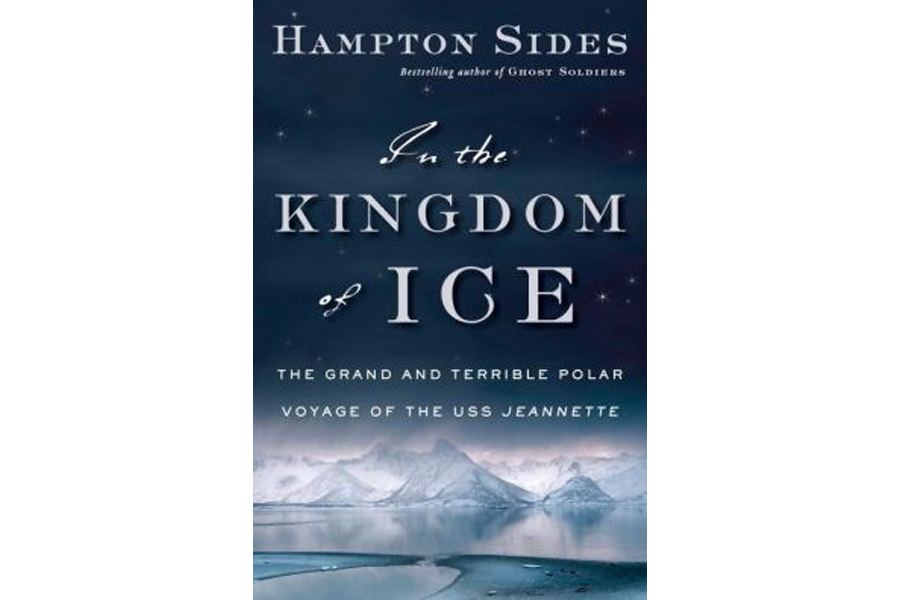'In the Kingdom of Ice' follows a disaster-ridden journey to the North Pole
These days we worry about melting ice caps at the North Pole and joke about Santa Claus in swim trunks. Turn the clock back 135 years and you'll find a similar vision, just rosier and based on scientific theories that couldn't have been more wrong-headed.
The North Pole, 19th-century thinking went, was anything but an icy winter wonderland. Some geologists of the era assumed that it was an oasis amid the ice, a warm sea of water that could serve as a priceless shortcut over the top of the world. Others conjured a lost civilization or whirlpools leading into the earth's core or monsters run amok.
Calmer minds failed to prevail. Polar fever gripped an eccentric newspaper publisher, a tiny US Navy on the make, and a flinty explorer with his eyes firmly fixed northward. In 1879, a ship named the USS Jeannette left on a mission to find the truth once and for all. It wouldn't return, and years would pass before anyone learned the fates of the men who called it home.
Bestselling historian Hampton Sides hints at the troubles that befall the crew in the subtitle of his engrossing new book In the Kingdom of Ice: The Grand and Terrible Polar Voyage of the USS Jeannette. The voyage is indeed both tragic and triumphant, a stunning display of grit laced with natural wonders and grisly horror.
As Sides explains, the fur-cloaked Arctic explorers of the latter 19th century were "the aviators, the astronauts, the knights errant of their day. People couldn't get enough of them." They had an especially keen admirer in a newspaper publisher named James Gordon Bennett, one of the most colorful people of his or any other era.
Bennett spent money and chased women like mad, scandalizing the upper crust with tawdry behavior and turning the now-forgotten New York Herald into the most powerful newspaper on earth. Remember Stanley finding Dr. Livingstone, who may or may not have been missing? That was Bennett's work. So was a stunning hoax that fooled a city.
With even more glory in mind, publisher decided to solve what Sides describes as the greatest mystery on the face of the earth, one that preoccupied everyone from Jules Verne to Mary Shelley: What's up there at the North Pole? With Bennett's help, a Navy captain named George Washington De Long set out to discover the truth in a remarkable ship with a remarkable crew.
His wife Emma, whose surviving letters are a historian's dream, said her husband had a "hungry heart." He's a tender romantic at home, urging Emma to not wear heavy mourning clothes if he doesn't return ("I shan't be a widow," she insists) and caressing her before he leaves on his voyage. "For an hour or more we talked quietly, holding ourselves rigid in control," she later recalled.
But De Long showed a stern side at a ship's helm. He was a believer in Mark Twain's quip that being a sailor develops "all of man's bad qualities and brings out new ones that he did not suppose himself mean enough for."
One of De Long's goals was to find a ship that could bend the Arctic to its will. Fortunately, the world of the 1870s was more advanced than we might assume today. Sailors could pull the salt out of seawater, deploy steam-powered winches to heave ships through ice packs, and make a variety of sophisticated scientific measurements.
De Long also needed a crew of hardy men who could survive freezing temperatures and months away from civilization. They ended up enduring much more than that. The Jeannette got locked in Arctic ice, which was expected, and encountered disaster, which was not.
Some readers will skip Sides's excursions into topics like the invention of incandescent light bulbs and dense theories about an "Open Polar Sea." But even those who get lost amid talk of ice anchors and forecastles will be drawn to the stories of the men on the ship, bound by a desperate bid for survival.
As in "Hellhound on His Trail," Sides's earlier book exploring the aftermath of the assassination of Martin Luther King, Jr., here Sides again demonstrates that he knows how to blend human drama with suspense and engrossing play-by-play descriptions. Readers will marvel at the hardy ingenuity of De Long's crew and hope they make it out alive.
Do the men of the Jeannette ultimately uncover the secrets that the earth tries so hard to protect? It's not giving away too much to note that the De Long Islands now exist in the East Siberian Sea. One of them is home to Cape Emma, named after a wife who endured her own solitary voyage in order that future generations might better understand their world.
Randy Dotinga, a Monitor contributor, is president of the American Society of Journalists and Authors.






